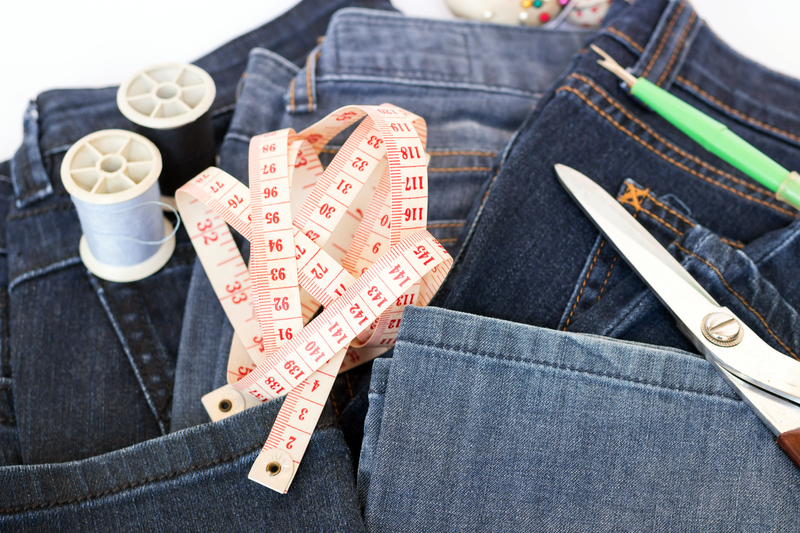Navigate the Recycling Landscape for Your Discarded Chargers
Every year, millions of phone, laptop, and gadget chargers are thrown away, contributing to mounting e-waste challenges. Whether you're updating to the latest tech or simply clearing out old cables, responsible charger recycling isn't just good for the environment--it's also a way to contribute to a more sustainable future. In this guide, you'll learn how to effectively navigate the recycling landscape for your discarded chargers, discover the options available, and understand the importance of proper disposal.
Understanding the Importance of Charger Recycling
In our fast-paced, tech-driven world, e-waste--including old chargers--has become one of the fastest-growing waste streams globally. Chargers may seem small, but collectively, they contain valuable materials and hazardous elements that require careful handling.
Why Chargers Should Be Recycled
- Resource Recovery: Chargers are made from metals like copper, aluminum, and even traces of gold. Recycling helps retrieve and reuse these precious resources.
- Decrease Toxic Pollution: Improper disposal can allow hazardous materials, such as lead and cadmium, to seep into water and soil, posing environmental and health risks.
- Reduce Landfill Waste: Recycling keeps chargers out of landfills, reducing the overall volume of waste and helping to limit harmful emissions from landfill sites.
The Scale of the Problem
Did you know that the average household now owns more than five charging cables and adapters? Multiply that by millions of homes worldwide, and you begin to see the magnitude. According to the Global E-waste Monitor 2023, over 57 million tons of e-waste were generated globally in one year, much of which includes small electronics and their accessories.

What Makes Chargers Difficult to Recycle?
Chargers are compact yet complex, made up of various materials tightly integrated. Their small size and the combination of plastics, metals, and sometimes circuit boards complicate recycling. Moreover, not every recycling center is equipped to properly process these items, and many people mistakenly toss them into regular bins.
Common Materials in Chargers
- Plastics - housing and cable insulation
- Copper - inside wires and connectors
- Electronic Components - chips, resistors, and circuit boards
- Aluminum - casing for some premium chargers
- Traces of gold - used for corrosion-resistant contacts
How to Navigate the Charger Recycling Process
Not sure where to turn? Follow these fundamental steps to navigate the recycling landscape for your discarded chargers and make the most eco-friendly choices.
1. Check Charger Condition: Can It Be Reused?
- Still Working? If your charger is in good condition, consider donating it to friends, family, or local charities.
- Online Marketplaces: Many buy-sell platforms now offer categories for accessories, keeping products in use for longer.
- Repair Cafes: These community-driven events can help repair or repurpose older chargers.
Reusing products is even better than recycling--it prolongs their life and lessens the need for new resources!
2. Identify Suitable Recycling Facilities
Not every recycling center accepts electronic accessories like chargers. Here's how to find the right place:
- Local Electronics Retailers: Many large retailers (like Best Buy, Staples, or Currys PC World) offer in-store drop-off bins for e-waste, including cables and adapters.
- Municipal E-waste Collection: City or county recycling programs often organize specific days or drop-off points for electronics.
- Certified E-waste Recyclers: Look for recyclers accredited by organizations such as R2 (Responsible Recycling) or e-Stewards for assurance of environmentally sound practices.
- Manufacturer Take-back Programs: Brands like Apple and Samsung have mail-back or store drop-off options for their chargers and devices.
3. Prepare Your Discarded Chargers
- Bundle Similar Items: Group chargers, cables, and adapters together if possible--this streamlines the recycling process.
- Remove Personal Identification: Though rare, if your charger is marked, remove any labels or stickers for privacy.
- Never Throw in Household Trash: Chargers in household waste end up in landfills or incinerators, contributing to pollution.
4. Drop Off or Ship to Certified Recyclers
Once prepared, take your chargers to the selected drop-off point or mail them using recycling envelopes provided by certain programs. Always verify the recycler's credentials.
Innovative Programs and Global Initiatives
Efficient charger recycling is gaining momentum around the world. Here are significant efforts driving progress:
Take-back and Trade-in Programs
- Apple: Offers collection bins for accessories and devices in their stores and via mail.
- Samsung: Provides drop-off points at authorized centers.
- Dell Reconnect: Partners with Goodwill to collect e-waste, including charging accessories.
- European Union: The Right to Repair and Universal Charger Initiatives aim to reduce charger waste by promoting compatibility and recycling.
Nonprofit and Community Recycling Drives
- Call2Recycle: Operating in North America, this network recycles small electronics, batteries, and chargers.
- EcoATM: Offers kiosks in malls for recycling phones and chargers conveniently.
- Local Electronics Drives: Community groups and schools often hold electronics recycling events--check local listings or council websites.
Key Considerations for Safe Charger Recycling
While you navigate the recycling landscape for discarded chargers, keep these safety tips in mind:
- Do not disassemble chargers at home--opened chargers may expose you to hazardous components or sharp materials.
- Keep chargers dry and intact before recycling, to avoid short circuits or chemical leaks.
- Check for batteries in certain portable chargers (like power banks), which require special recycling protocols.
Certified Recycling Matters
Choosing a certified e-waste recycler ensures your discarded chargers are processed using best practices to minimize pollution, maximize material recovery, and protect workers' health. Look for R2 or e-Stewards certification when possible.
Alternative Strategies to Reduce Charger Waste
While recycling is crucial, other actions can further minimize your charger footprint:
Buy Less, Choose Wisely
- Embrace Universal Chargers: Look for USB-C and other emerging standards compatible across multiple brands, reducing the number of chargers needed.
- Avoid Cheap "Throwaway" Chargers: Invest in quality chargers that last longer, reducing waste over time.
- Check for Modular or Repairable Models: Some new chargers allow for parts to be replaced instead of discarding the whole unit.
Advocate for Change
- Support Right-to-Repair Legislation: Laws that mandate easier repair and compatibility for chargers help cut down e-waste.
- Ask Brands for Take-back Schemes: The more consumers ask about recycling programs, the more brands will provide solutions.
FAQs: Recycling Discarded Chargers
1. Can I just put old chargers in the household recycling bin?
No. Most household recycling systems do not process electrical components. Always use dedicated electronics recycling programs for safe and effective disposal.
2. What happens to chargers after recycling?
Chargers are dismantled. Metals and plastics are extracted and processed for reuse in manufacturing new products, while hazardous substances are handled according to safety standards.
3. How do I find certified recyclers in my area?
Visit websites such as Earth911 or Call2Recycle. Enter your ZIP or postcode to find nearby facilities tailored for e-waste.

The Future of Charger Recycling
The movement toward universal chargers, better materials, and extended product lifespans is already making a difference. Ongoing innovations in both design and recycling tech mean that soon, discarding chargers won't be nearly as wasteful or complicated as before.
The Role of Manufacturers
- Design for Recycling: More brands are reducing glue and mixed materials, making chargers easier to dismantle and recycle.
- Transparent Supply Chains: Knowing where and how chargers are made and recycled is vital for sustainability.
Conclusion: Take Charge of Your Charger Waste
Learning to navigate the recycling landscape for your discarded chargers is now an essential aspect of modern, eco-conscious living. By taking steps to reuse, recycle, and advocate for better alternatives, you can help reduce environmental harm while making sure valuable resources are recovered. Remember:
- Always seek specialized recycling channels for chargers.
- Support initiatives for universal, repairable, and sustainable charging solutions.
- Empower your community by sharing knowledge and encouraging responsible recycling practices.
Next time you upgrade your device, make sure your old charger gets a second life--or is recycled responsibly--and help pave the way for a cleaner, greener tech landscape.